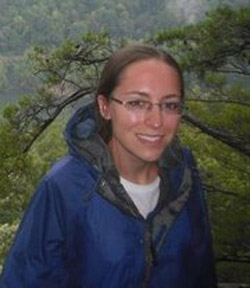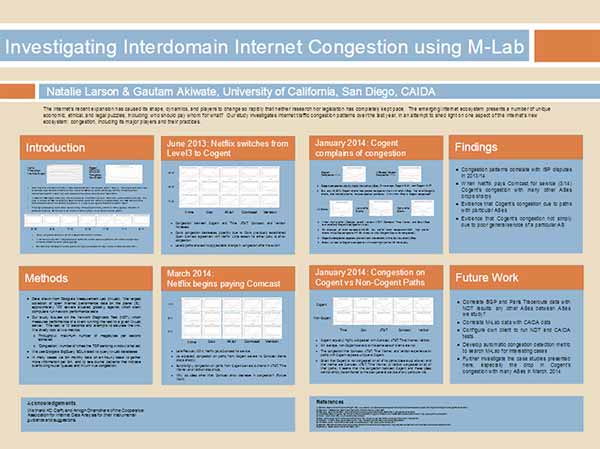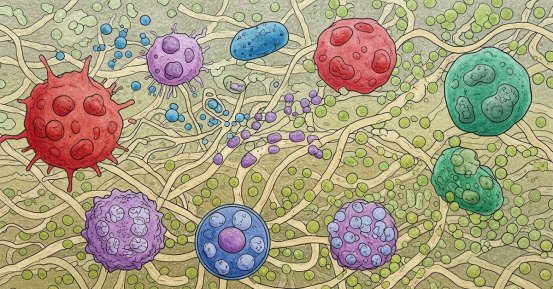Computer Science Ph.D. Student’s ‘Unconventional Odyssey’ to SMART Fellowship
Published Date
By:
- Doug Ramsey
Share This:
Article Content

Computer science and engineering Ph.D. student Natalie Larson
Natalie Larson has three years to finish her Ph.D. in computer science at the University of California, San Diego, and she wasn’t entirely certain where she would find the support to complete her degree. But now she is. The U.S. Department of Defense (DoD) has awarded Larson a Science, Mathematics and Research for Transformation (SMART) Fellowship, which will cover all of her costs for the next three years in return for a commitment to work the next two summers and at least three years in a DoD lab after graduating in 2017.
“After graduating I hope to continue doing work in the field of Internet science,” says Larson. “It’s an area whose importance to the Department of Defense’s science and technology enterprise should only grow with time, and the work I will be doing – ensuring national security – will be important and meaningful.”
After being interviewed by an Air Force office in New York and a Navy research center in California, Larson was paired by the DoD with her first choice: the Naval Surface Warfare Center (NSWC) in Corona, 92 miles north of San Diego.

The poster presented by Larson at a conference in London in the spring tracked Internet congestion in connection with the battle between Netflix and Comcast – congestion that disappeared after Netflix agreed to pay Comcast for faster access to the Internet.
Larson will be doing classified research at NSWC Corona, so all she knows is that it will involve mathematics and computer science. She has not yet finalized with her CSE advisors the exact scope of her dissertation, but she hopes to select a topic in the general field of Internet congestion that would tie into the work she will be doing at NSWC Corona.
“There are no formal constraints on the research I do while at UCSD,” says Larson. “However, I am hoping that new research directions will emerge from my interactions with NSWC Corona, and that the work I do in the coming years can be beneficial for both UCSD and the Navy.”
For her first year as a CSE graduate student, Larson received a standard one-year UC San Diego Ph.D. fellowship and worked on scientific computing with CSE Prof. Scott Baden. For the past year she has worked in the Center for Applied Internet Data Analysis (CAIDA) based in the San Diego Supercomputer Center, where she routinely collaborates with her mentor, CAIDA research scientist Amogh Dhamdhere, and others.
CAIDA Director KC Claffy (a CSE faculty-affiliate) and CSE Prof. Geoffrey Voelker, who recommended Larson for the SMART award, are her Ph.D advisors. Claffy recently won this year’s IEEE (Institute of Electrical and Electronics Engineers) Internet Award, in recognition of her “seminal contributions to the field of Internet measurement, including security and network data analysis, and for distinguished leadership in and service to the Internet community by providing open-access data and tools.”
Larson has also TA’d courses on Computer Networks (CSE 123), Introduction to Programming in Java (CSE 8A) last winter, as well as Mathematics for Algorithms and Systems Analysis (CSE 21) in Spring 2014. Larson – one of three CSE representatives to the university’s Graduate Student Association, and a member of Women in Computing – also received a $1,500 grant from the Center for Networked Systems (CNS) to attend the Grace Hopper Celebration of Women in Computing conference in 2013. She also received a travel grant to attend the Internet Traffic Monitoring and Analysis Workshop this spring in London, where Larson presented a poster on “Investigating Interdomain Internet Congestion using M-Lab.” Interdomain Internet congestion involves congestion on links that connect independently administered sections of the Internet.
“Our group has seen many cases in which interdomain congestion has been closely correlated with large-scale economic events,” notes Larson. “In January and February of this year, we saw heavy congestion between Cogent – one of Netflix’s transit providers – and virtually all other service providers with the exception of Cox, which has a special agreement with Netflix. But when Netflix agreed to pay Comcast too, nearly all congestion on paths between Cogent and other service providers disappeared.”
The SMART Fellowship’s reviewers were undoubtedly impressed with Larson’s co-authorship of a paper based on her work last summer. In the ACM SIGCOMM Computer Communication Review article on “Using PeeringDB to Understand the Peering Ecosystem,” Larson and her co-authors mined one of the few sources of public data available about the inter-domain peering ecosystem, and they found that “PeeringDB membership is reasonably representative of the Internet’s transit, content and access providers in terms of business types and geography of participants.”
Larson is spending this summer in Norway at Simula Research Laboratory, where she is working with some of CAIDA’s close collaborators on analyzing congestion in Norwegian mobile broadband networks.
The CSE Ph.D. student admits that hers has been an “unconventional odyssey” – taking her from getting a B.A. in art from Grinnell College in 2006, to enrolling in a graduate program in philosophy at Miami University of Ohio, then to Vanderbilt University, where she received two B.S. degrees, in mathematics and computer science, in 2012. She also worked as an SAT teacher for The Princeton Review, and after finding errors in nationally distributed GRE math materials, she was invited to write new math content for a book of ACT practice questions.
In-between academic years at Vanderbilt, Larson took maximum advantage of opportunities to do scientific research each summer, notably at Harvard’s Center for Astrophysics, MIT’s Haystack Observatory, and NASA’s Langley Research Center. In 2011 she was one of only 14 students nationwide admitted to a week-long intensive introduction to quantum computing at MIT. At NASA Langley, her job primarily involved writing software to simulate using in-flight Internet to transmit and receive Automatic Dependent Surveillance – Broadcast (ADS–B) signals, an advanced way of tracking the location of aircraft in flight.
During the school year at Vanderbilt, Larson also used her programming skills to support physics faculty who were participating in the Compact Muon Solenoid experiment (part of the Large Hadron Collider program). “I wrote a program that associated IP addresses with the data storage facilities geographically closest to them in order to expedite large data transfers,” recalls Larson.
The SMART program aims to increase the number of scientists and engineers working in DoD labs. Approximately eight percent of the 2,000 applications for SMART Fellowships each year are successful, with 68 DoD labs and 12 government agencies invited to interview candidates and make offers. If more than one lab wants a candidate, the student is asked to state the preferred location.
Larson continues a trend among UC San Diego students. Between 2005 and 2013, 21 UC San Diego students received SMART Fellowships – more than all of the other University of California campuses combined.
Share This:
You May Also Like
Stay in the Know
Keep up with all the latest from UC San Diego. Subscribe to the newsletter today.



